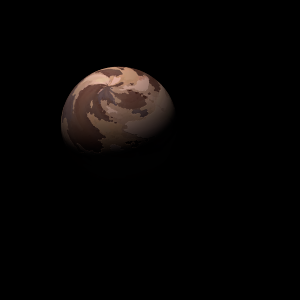|
|
Space Astro
|
Info for exoplanet "Isole Teae"
| Scientific (actual) data |
|---|
| Name | Kepler-1212 b |
| Planet status | Confirmed |
| Radius | 0.191 |
| Orbital period | 12.9413 |
| Discovered | 2016 |
| Updated | 2021-02-05 |
| Tconj | 2454970 |
| Publication | Announced on a website |
| Detection type | Primary Transit |
| Alternate names | 2MASS J19472482+5002144 b, K02371.01, KIC 11824786 b, KOI-2371 b, KOI-2371.01, WISE J194724.82+500214.3 b |
| Star name | Kepler-1212 |
| Right ascension | 296.85° |
| Declination | 50.04° |
| Mag j | 13.872 |
| Mag h | 13.544 |
| Mag k | 13.565 |
| Star distance | 1304 |
| Star metallicity | 0.03 |
| Star mass | 1.1 |
| Star radius | 1.15 |
| Star age | 3.24 |
| Star temperature | 6051 |
| Star alternate names | 2MASS J19472482+5002144, KIC 11824786, KOI-2371, WISE J194724.82+500214.3 |
| Wikipedia article | Kepler-1212 b |
Back
| |
| Fictional info (?) |
|---|
| Suggested name | Isole Teae |
| Planet type | Cold planet |
| Its orbital period around Kepler-1212 of 13 earth days is the longest of all the planets in its solar system.
It has the densest atmosphere of the two cold planets, consisting partly of molecular hydrogen. |
| Atmosphere | Molecular hydrogen | 78% |
| Sulfur dioxide | 11% |
| Methane | 9.9% |
| Carbon dioxide | 1.4% |
| Atmospheric pressure | 30 bar |
 |
| No known satellites |
| Google search for Isole teae |
|
Website by Joachim Michaelis
|
|
|
|